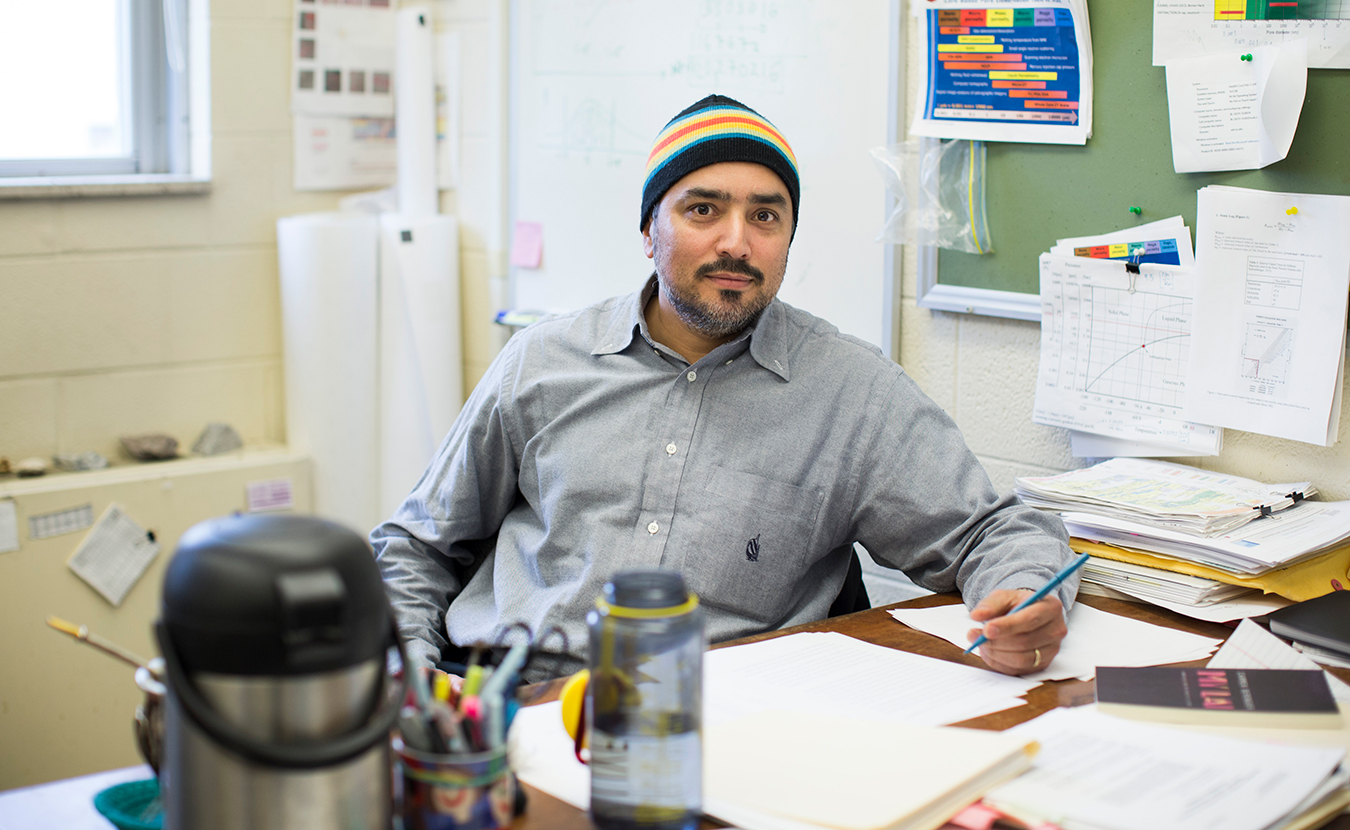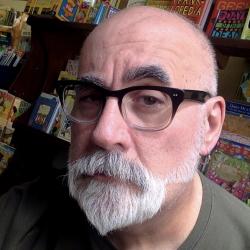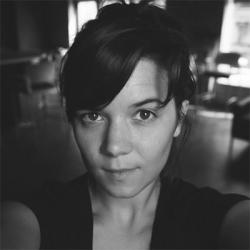Cristian Medina might know a thing or two about the geosphere but, as recently the first decade of this century, he wasn’t quite as familiar with the map of the Midwest. Cristian’s wife, Eden Medina, was offered a job in what is now the School of Informatics, Computing, and Engineering here at Indiana University in 2004. Excited, she showed her husband her offer letter.
“Do you want to move to Indiana?” she asked.
“Sure,” he said, becoming as excited as his wife.
He laughs as he recalls the day. “I didn’t even know exactly where Indiana was,” he says, “but that’s my spirit.”
Brimming with energy, consumed by curiosity, enamored of poetry, intimate with the movements of water, oil, and gases in the subsurface beneath our feet, Cristian Medina now calls Bloomington home. He’s insinuated himself into our town’s everyday life to a degree that makes me wonder when he ever finds the time to take a deep breath.
This locale might seem a bit tame compared to the spectacular place where Medina grew up — the city of Arica, a hop and a jump from Chile’s border with Peru.
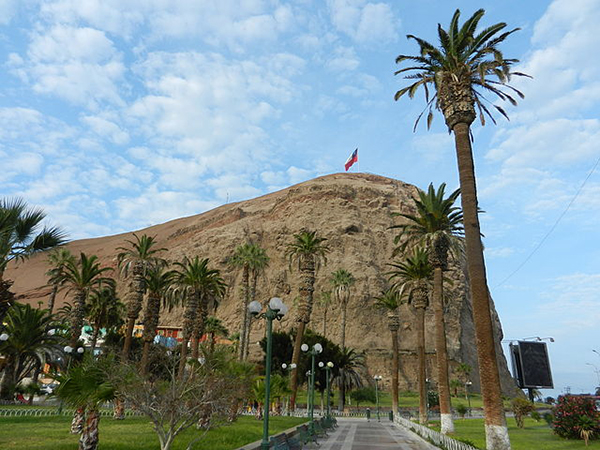
Morro de Arica, an exposed rock outcropping towering some 450 feet above the city of Arica, Chile. This area of Chile has the lowest level of annual rainfall on Earth, but Medina says that is changing due to global climate change. | Photo by Alejandroven
“When I was a kid,” he says, “we had the Andes Mountains right there, on one side of us. We had the Pacific Ocean on the other side. We had volcanoes. We had a lot of geology in Chile.”
Just beyond the jagged peaks of the Andes lies the Atacama Desert. In fact, Arica itself holds a global distinction.
“When you look at the annual precipitation of any city on Earth, my hometown is the one with the lowest rainfall,” Medina points out. He’s right — average annual rainfall in Arica is 0.03 inches. And from 1979 through 1993, no rain at all fell on the city.
Given the recent downpours hereabouts, Bloomington and Arica are as different as limestone caves and sandy beaches.
Medina’s hometown is noted for its signature feature, the Morro de Arica, an exposed rock outcropping towering some 450 feet above the city. With its veins and layers and splotches, the morro serves as a textbook illustration of the area’s deep geologic and archeological history. It loomed over the young Cristian.
It all was enough to stir the imagination of a thoroughly inquisitive boy, one who wanted to know what all those layers were or how the planet’s biggest expanse of water, lapping up on the shores of the port city, could exist side by side with the Earth’s driest desert. It seemed almost a given he’d become a geologic researcher.
Medina’s the kind of guy who can find a home among our gentle, rolling hills even though our own Rocky Mountains are two time zones away and the nearest ocean is some 750 miles distant.
Things may be changing in Arica, Medina warns: “I must point out that lately, the last three to five years, Arica has had really abnormal rains coming into the city.”
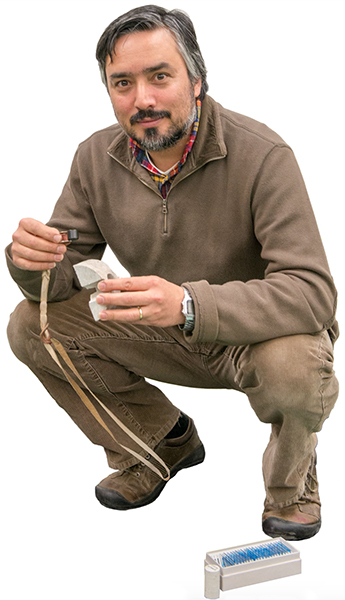
Medina is a researcher for the Indiana Geological and Water Survey, as well as a Ph.D. candidate in the IU Department of Earth and Atmospheric Sciences. | Courtesy photo
That can be blamed, he says, on global warming. “The planet is warming up, and consequently the patterns and distribution of events, either rainfall or wind or extreme temperatures, are changing.”
So it’s fitting that Medina’s work in Bloomington just might have some small but perhaps key effect on humankind’s ongoing toasting of its home planet.
Medina now works for the Indiana Geological and Water Survey, a research institute dedicated to recording, analyzing, and educating the public about the things going on under our feet and how those things interact with our water and air. He’s also working on his dissertation for his Ph.D. in the Department of Earth and Atmospheric Sciences at IU, hoping to defend it sometime early next year.
“One of my research topics deals with the fact that there is global warming,” Medina says. “We are a state that burns a lot of coal to generate electricity. All of the CO2 [carbon dioxide] generated by power plants ends up in the atmosphere. Our goal is to capture it before it gets into the atmosphere. Then you compress it and you clean it until you have a pure CO2 stream. The idea, what we’re evaluating now, is maybe you can inject it down deep into a reservoir in the sedimentary rocks way below the aquifer. The idea is to get it there and store it safely.”
Who knows? Maybe historians of the future will write kind things about scientists like Medina whose efforts helped prevent the globe from frying.
“I call it a bridge technology,” he says. “It won’t solve all the problems. I strongly believe we need to move toward renewable energies. However, we are not there yet. In the meantime, for the next fifty, a hundred years, we need to come up with a plan so we stop heating up the planet.”
It’s this serious, high-minded, hard-science practitioner whose love of poetry spurred him to co-found a DIY publishing company in 2014, Cardboard House Press.
“I had the good fortune of meeting a man who became a really good friend, Giancarlo Huapaya,” Medina says. “He’s a Peruvian poet. He was here because his wife was getting a degree at the School of Public and Environmental Affairs. The first conversation we had was about poetry, Chilean poetry, Peruvian poetry. He was like, ‘You know, I have an idea. Do you know about the cartoneros? The cardboard movement?’”
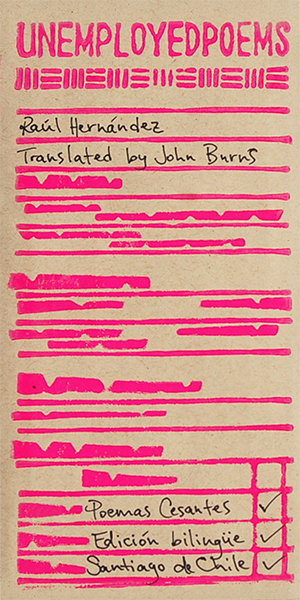
When Medina and friend Giancarlo Huapaya founded Cardboard House Press, they began hosting workshops to make books by hand out of cardboard — “cardboard pieces of art.” | Courtesy image
The cartoneros arose from the ashes of a major economic depression in South America that began in 2001. Thousands of unemployed Argentinians began rifling through garbage cans and dumpsters in Buenos Aires, looking for recyclables of any type that they could sell to sorting plants. The practice quickly spread throughout the continent. Creative types began making new things, re-fashioning them, from materials found in litter bins.
“People didn’t have any money,” Medina says, “so they started making their own books. They said, ‘Okay, we’re going to make a deal with those guys on the street recycling cardboard. We’re going to cut the pieces and make books out of them.’
“So Giancarlo and I said, ‘Okay, let’s do that in Bloomington.’”
The two set up a series of workshops for kids at the Monroe County Public Library. “We had twenty or thirty kids every weekend for seven weeks. The kids — you know how they are — were really receptive. They wrote their own verses. They painted books that we brought for them. They cut and stitched their own books.”
Once that workshop series was completed, Huapaya and Medina started thinking bigger.
“We held workshops for adults at the university, at the public library, at Boxcar Books, at La Casa Latino Cultural Center. We met on a weekly basis to make many, many books. All by hand. We painted the covers. We cut everything. We hand-stitched. Cardboard pieces of art.
“Our work consisted in not only making the books but also editing the books. We didn’t modify much what the translator did, just making sure there were no typos. We made sure everything was in a good place.”
Medina shows me a copy of Cardboard House’s poetry collection My Lai, by the Chilean poet Carmen Berenguer. She founded a Latin American poetry movement while living in the U.S. in the 1980s and organized the Women’s Literature Congress in Chile in 1987. The title, My Lai, is a play on words. Pronounced “my lie,” as in my untruth, it refers to the infamous massacre perpetrated by American soldiers in Vietnam in March 1968. The book is one of Medina’s favorites.
“All of our authors — Carmen Berenguer and Raúl Hernández from Chile, Néstor Perlongher from Argentina, Domingo de Ramos and Roger Santiváñez from Peru, and the rest — are from Latin America,” Medina says.
All the books are bilingual, with the Spanish text on the left and the English translation on the right. Medina hands me another book, Unemployed Poems, by Raúl Hernández. I run my fingers over the cover art and can actually feel the watercolor brush strokes laid down by some anonymous painter. All the books are for sale on the Cardboard House Press website.
Huapaya moved to Phoenix, Arizona, last year, taking the workshops with him. Medina, swamped with thesis work as well as his other civic activities, chose not to continue the workshops here in Bloomington at this time.
He’s busy, for instance, serving as president of the Bloomington Indiana Scholastic Chess Club. “My son is a chess player,” Medina says. “He’s 11. He started showing interest in chess when he was six. Since then he’s been studying it and practicing and competing in different places. To see your kid — or any other kid — getting engaged in this fabulous game, their focus, their attention, it’s marvelous.
“You know, sometimes you lose; you thought you almost had the game. They learn patience and sportsmanship, sort of life hacks, if you will. We meet every other Sunday at the Monroe County Public Library. We have about 15 to 20 kids, K through 12th grade, regularly attending.”
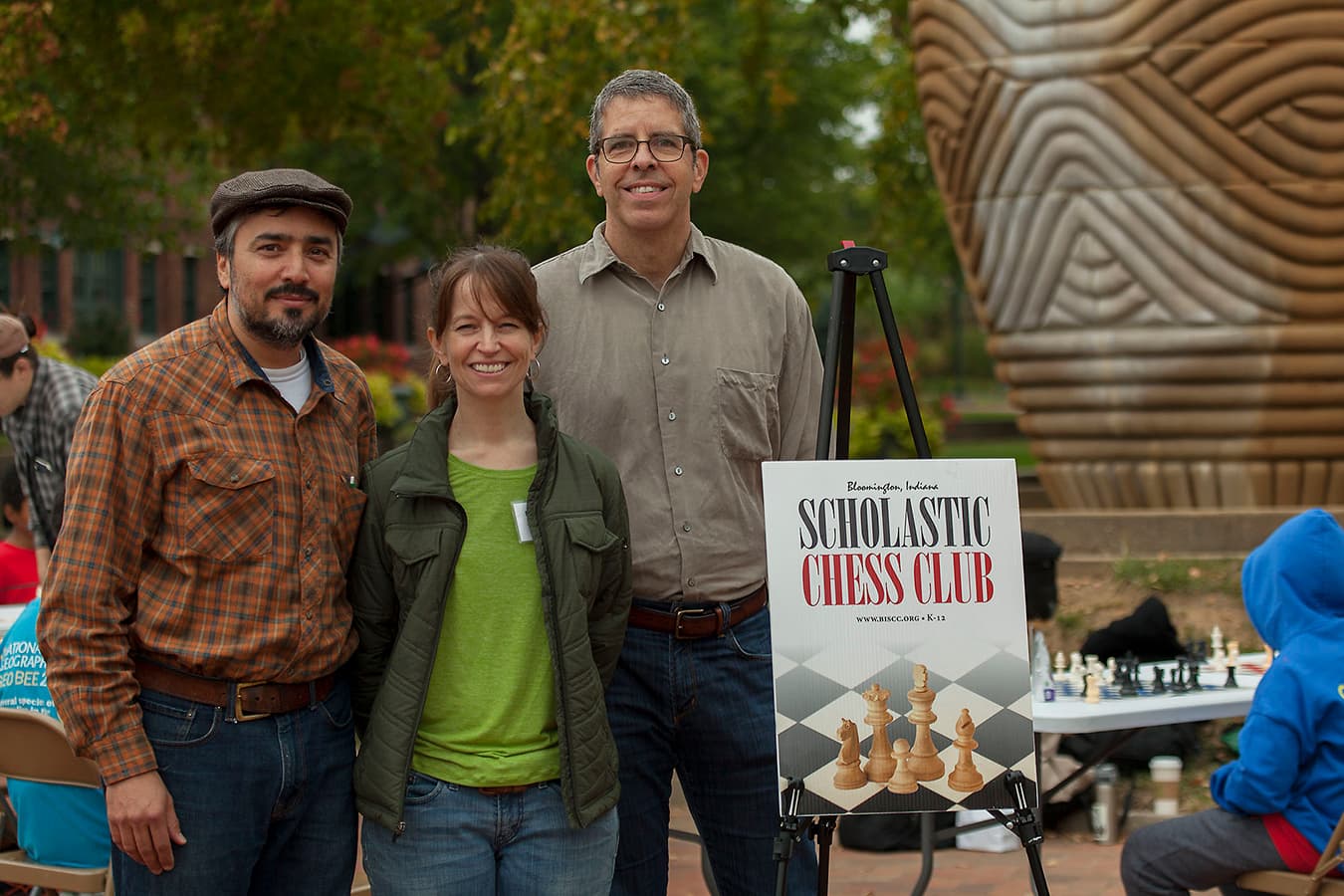
Medina, left, with Scholastic Chess Club member Rebecca Harris and former treasurer Neal Abdullah. | Courtesy photo
Inspired by his son, Medina began playing and is scheduled to play in his first tournament. A big chess club in Indianapolis will come down Saturday, September 22. “I recently joined the United States Chess Federation,” Medina says. He’ll receive his first numerical chess ranking after he plays in the tournament.
Medina’s also been a volunteer at community radio station WFHB, where he hosted the program ¡Hola Bloomington! for a few years. He continues to volunteer, weekly, at Mother Hubbard’s Cupboard. “I like cooking,” he says. “I used to cook big pots of food and then bring it to Peoples Park or Seminary Square for people in need. But then it got complicated.” The city rousted people experiencing homelessness from Peoples Park and cracked down on those who provided services for them there. That’s when Medina decided he could help the hungry by working with Mother Hubbard’s Cupboard.
One of Medina’s favorite dishes is curanto, a staple in the Chiloé Archipelago at the southern tip of Chile. “It consists of making a hole in the ground and you put in clams and mussels and potatoes and vegetables, you cover it with hot stones, and then you cover it all with big leaves — they are called nalcas — which are one or two meters in diameter. Then they uncover it and you eat all the food from right out of the hole.
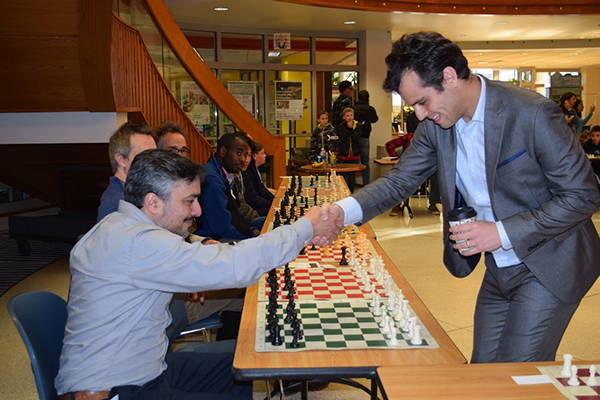
Medina, left, shakes hands with grandmaster Fidel Corrales, who visited Bloomington and played a simul game in December 2017. | Courtesy photo
“Since I can’t do that here,” he says, “there is a kitchen version of it called pulmay. Some people put meat in that. It’s a great dish, so yummy.”
As if that all isn’t enough, Medina is involved with a project that might change, in a small way, the streetscape here in Bloomington. “I put together a grant proposal with Daniel Weddle — he’s a carpenter who does tiny homes — about a year ago and we succeeded in getting it.” Working with the city’s Sean Starowitz, assistant director for the arts, Medina and Weddle proposed to build Bloomington’s first “parklet” of its kind [another one was created last year].
“It is a wooden structure that looks like a deck. You put it in a parking space. You can move it from place to place. You can store it away,” Medina says. “Basically, this is a place where people can go and hang out, sit down, work, drink a coffee, have a conversation. You can see them in larger cities like Los Angeles or Berkeley, more progressive places. The idea is to return public spaces to the people.”
If all goes well we should see their parklet in Bloomington next spring.
Medina’s lived in the United States for about 15 years now. His accent is sing-song-y. “Sometimes we call the Chilean accent Castellano. People say we kind of sing a little bit. We are lazy in the sense that we drop a lot of S’s. When someone is learning Spanish and they go to Chile, they have a hard time. The Peruvians, I like the way they speak. And the Bolivians. They are more like purists. They speak better Spanish.”
Yet, Spanish pronunciation is the only thing about Cristian Medina — the scientist, poet, publisher, radio host, volunteer cook, chess player, civic innovator, husband, and father — that can be called lazy.
[Editor’s note: Michael G. Glab’s full interview with Cristian Medina can be heard today on his radio show, Big Talk, which runs on WFHB (91.3 FM, 98.1 Bloomington, 100.7 Nashville, 106.3 Ellettsville) every Thursday at 5:30 p.m. and will be available, along with podcasts of past shows, at WFHB.org. Each of Glab’s monthly profiles for Limestone Post is based on one of his Big Talk interviews and will be posted on the same day that the interview airs on Big Talk. Click here to listen to his interview with Cristian Medina.]

